According to CX platform developers, NICE, and its 2022 Digital-First Customer Experience Report: 81 percent of consumers say they want more self-service options, with 19 percent stating they want much more. Further, according to the survey, an additional 95 percent of companies surveyed said they witnessed:
" A dramatic growth in customer self-service requests in 2021, major gaps still exist between what businesses think customers want and what consumers (actually) prefer."
These data highlight something fundamental; customer expectations for superior experiences are growing. The report's findings: also highlight a significant disconnect between organizational and consumer perceptions of current digital and self-service channels.
Of the 81 percent of consumers who say they want more self-service options - a mere 15 percent of them said they were (highly-satisfied) with the tools, they were given to perform several self-service tasks. This could be anything from booking flights to renting a car, customers merely want the technology to work. Herein lies one of many disconnects, companies believe that 53 percent of consumers are "very satisfied" with their self-service options.
"This despite 95 percent of companies reporting a major increase in self-service requests in 2021, indicating rapid growth in consumer demand for greater speed and convenience," the report states.
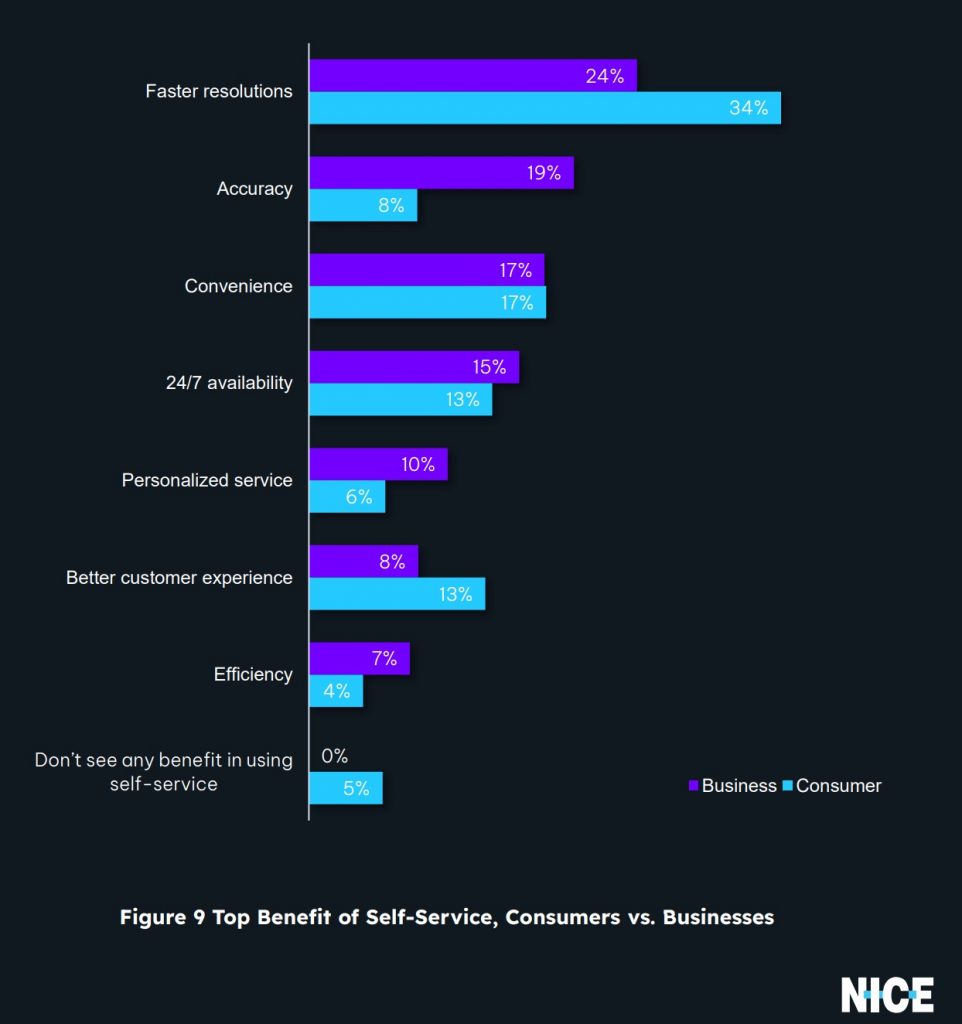
NICE printed its 2022 Digital-First Customer Experience Report, hoping it would help organizations of all sizes gain perspective regarding consumer self-service and digital channels. Responses are from a pool of 1320 respondents located in the United States and the United Kingdom.
Brand Loyalty in Short Supply if you Don't Deliver
NICE further noted that consumer expectations continue to increase, expressly as digital and self-service channels proliferate and evolve, something (that has) undoubtedly led to companies searching for much greater insights into customer experience and brand loyalty.
Diving extensively into the Digital-First Customer Experience Report: NICE data indicate that 95 percent of consumers say they "place a great (deal of) importance on customer service, which impacts brand loyalty. Forty-one percent of consumers say they would "abandon a brand after two 'bad' digital interactions. In reality, 25 percent of businesses do not think customers will (drop them) that easily.
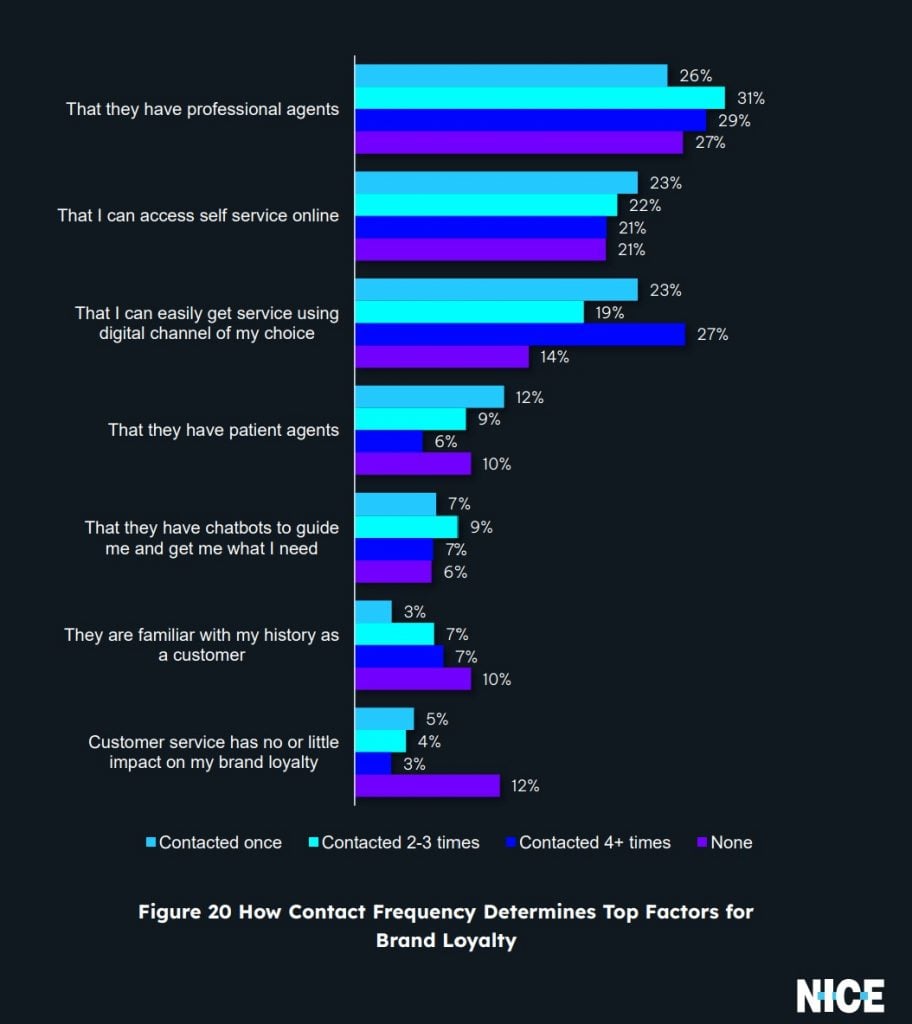
The majority of businesses (66%) did, however, predict that in most cases, it would take three or more bad interactions to cause a consumer to churn. Fifty-seven percent (or the majority of) customers surveyed say they would leave a brand following a single negative CX interaction, meaning that businesses have some catch-up to play on this front.
"Online self-service and easy access to their preferred channels are two of the top customer service factors in their decision regarding brand loyalty," the report indicates. The survey also shows that businesses continue to underestimate how quickly that (might) happen.
Orgs Recognize Importance of Digital Channels
Still, NICE found that companies are somewhat in tune, as they recognize the importance of current digital channels to consumers. "They have attempted to improve their availability:" noting in 2022, the top digital channels companies plan to expand "significantly" include chat (47%), website access (44%), and search options (42%).
Fifty-two percent of consumers crave chat, followed by email at 47 percent, and self-serve via company websites; at 33 percent. According to the survey, "comparing UK and US preferences, the order of preferences is the same for consumers in both countries."
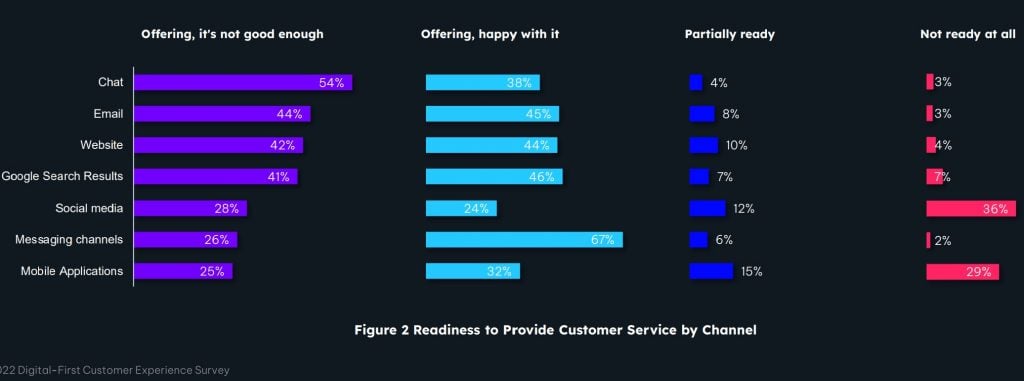
UK-based consumers prefer social media and messaging, while US-based consumers say they prefer company-developed mobile apps and Google search results. Paul Jarman, NICE CXone CEO, said the goal is to avoid consumer friction, adding:
“Avoiding friction is the key factor today in shaping opinions and differentiating between brands consumers love, and those they feel are not worth their time."
The report appears to highlight a need for greater attention in this area, as customer expectations only continue to rise, and the way they choose to contact a business does, too. On average, NICE found that consumers have done (a lot of) "contacting," noting that customers say they contacted customer service departments three times during the last 12 months.
Complex Customer Requests Need Robust Tech
One of the central issues, at least for customers, is that current self-service options do not really allow them to address the more complex issues they experience. Hoping to reveal potential blindspots in customer coverage, one of the survey's most revealing findings is that, while 36-percent of consumers say they want to see companies make their self-service options smarter: less than 11 percent of businesses make it a priority or do it.
The survey found that the number one request to improve self-service capabilities, (34 percent of respondents) is that customer service will become "smarter" and gain the ability to "digitally address more complex tasks than the kind currently being handled."
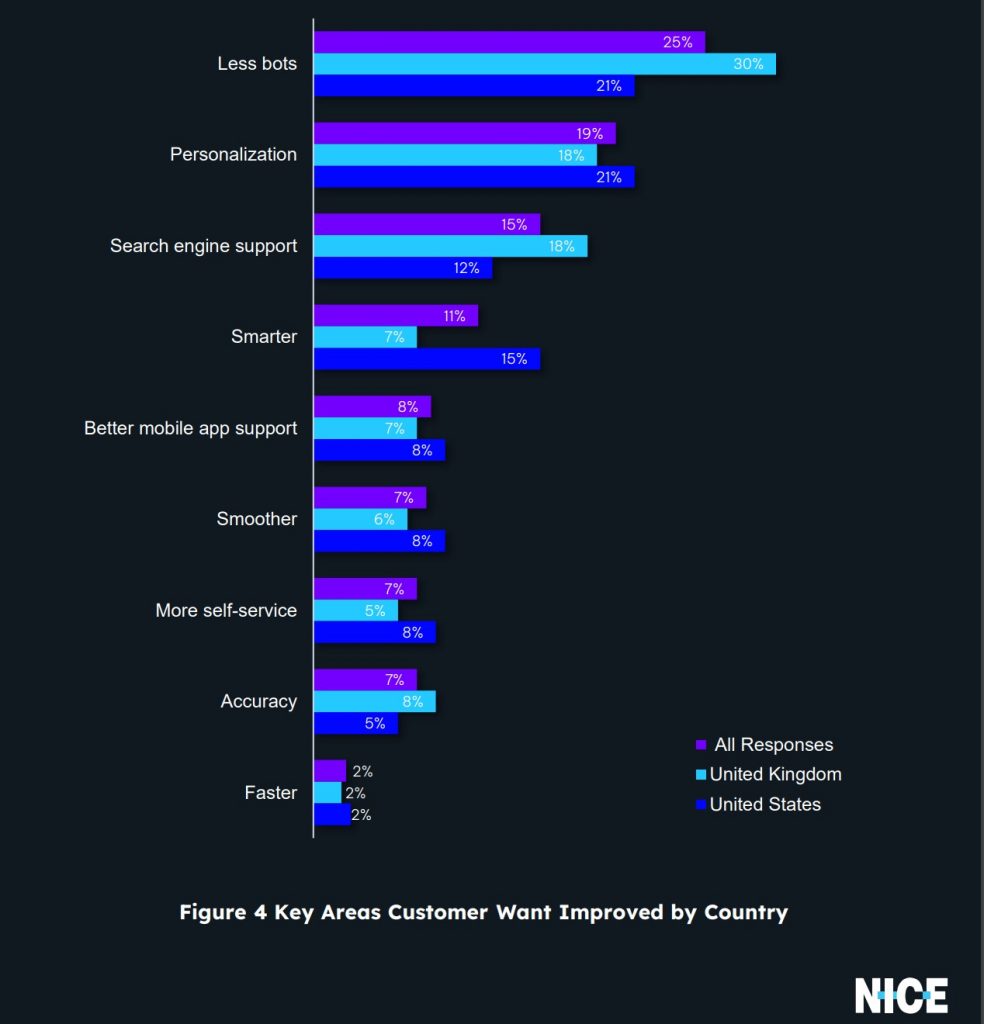
"Interestingly, this grows with the frequency of contacting customer service. The more you contact customer support, the stronger the wish to see it get smarter." Jarman said. The survey further states that: those who contacted customer service two or more times wanted "smarter" capabilities.
That figure drops to 29 percent for customers who say: they reached out to support only once in the last 12 months.
Don't Discount the Power of Google for CX
Google is a powerful tool. And that is an understatement. According to NICE, nearly half (46%) of consumers go to Google as their first stop in resolving customer support questions and problems.
It also notes that customers desire to self-serve. And that comes with many benefits like reduced contact center call volumes. And customers are trying to self-serve in record numbers, yet a mere 32 percent of businesses say they are "happy with their search engine visibility."
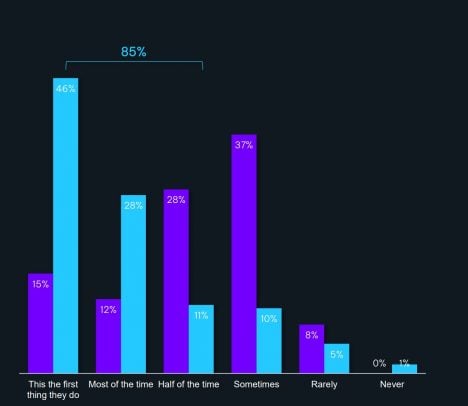
The rest, a staggering 68 percent of businesses, say they are either looking to expand capabilities or have no strategy in place to reach consumers on via Google. Having a search engine strategy to tackle this for (the majority of) businesses; remains an ongoing challenge.
With 5.6 billion Google searches performed, daily, according to HubSpot, the tool is a good one to leverage. It could even be central to success in CX. For that reason, getting a plan in place and implementing it to work out the kinks is warranted. You can download the full report here.
Stay tuned for the latest headlines, trends, and more on GetVoIP News.



